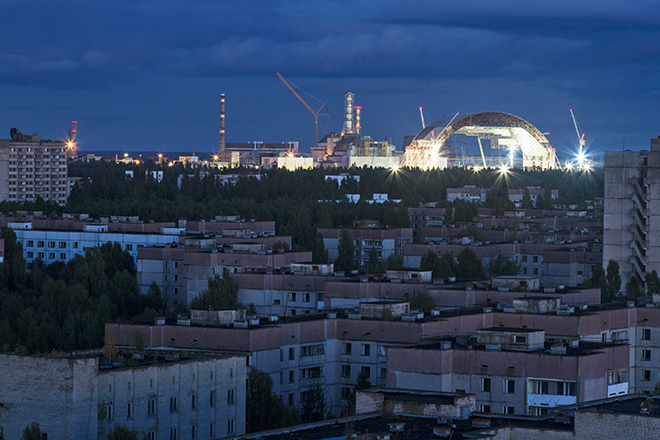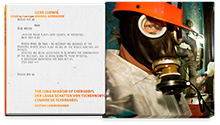More than 30 years after Chernobyl reactor #4 blew up, causing the world’s worst nuclear disaster to date, the failed power plant is quickly disappearing from sight. A few days ago, workers began moving a new giant shield to cover reactor #4 along with the so-called sarcophagus, a hastily erected steel and concrete structure that was meant to seal in the smoldering radioactive remnants but is now structurally unsound and leaky. Chernobyl’s new shield, named the New Safe Confinement (NSC), is the largest moveable land-based structure ever built.
Spanning 257 meters, the arch-shaped NSC measures 108 meters high and 162 meters long and is strong enough to withstand a tornado. A sophisticated ventilation system was designed to eliminate the risk of corrosion, ensuring that there will be no need to replace the coating and expose workers to radiation during the structure’s lifetime (an estimated 100 years). The final construction cost amounts to 1.6 billion USD, paid for by more than 40 donor countries.
The NSC is currently being slid into its final “resting place” over the leaky sarcophagus. Moving the 36,000-ton structure is accomplished with the help of a special skidding system, consisting of 224 hydraulic jacks that push the arch 60 centimeters each stroke. It is anticipated that the total skid time will be around 40 hours of operation, spread over a period of several days. My photograph shows the arch in the mid-phase of construction.
You can learn more about the Chernobyl catastrophe from my book and iPad app, which resulted from decades of covering the aftermath of the disaster: “The Long Shadow of Chernobyl,†available here.
For more information: Time Magazine – BBC News – European Bank for Reconstruction and Development







Comments on this entry are closed.